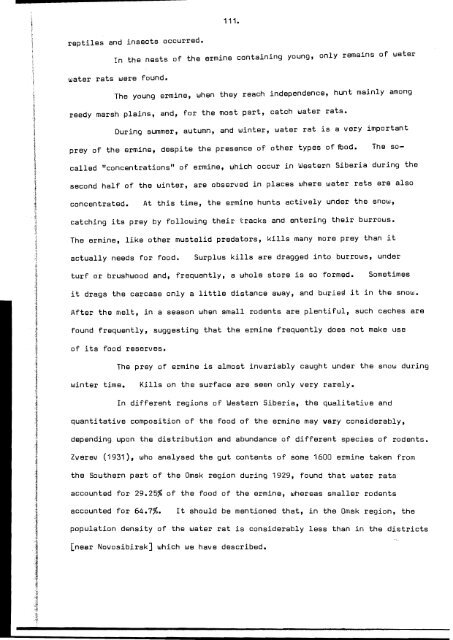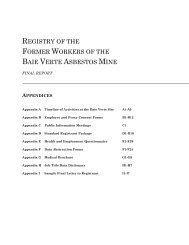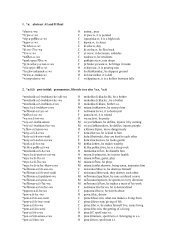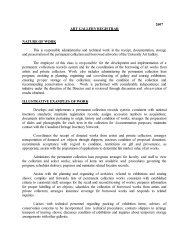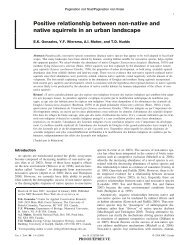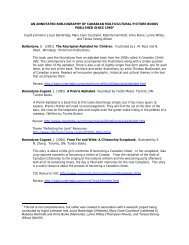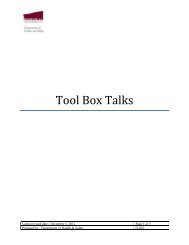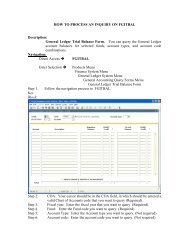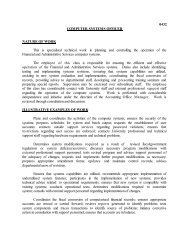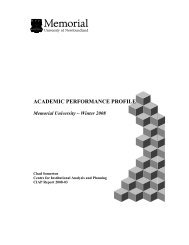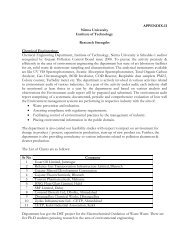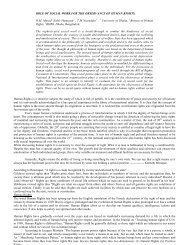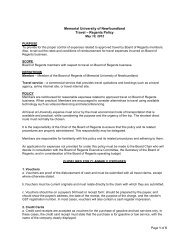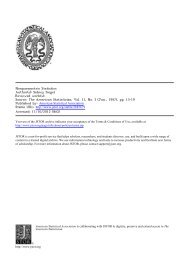Create successful ePaper yourself
Turn your PDF publications into a flip-book with our unique Google optimized e-Paper software.
111.<br />
reptiles and insects occurred.<br />
In the nests <strong>of</strong> the ermine containing young,<br />
only remains <strong>of</strong> water<br />
water rats were found.<br />
The young ermine, when they reach independence, hunt mainly among<br />
reedy marsh plains, and, for the most part, catch water rats.<br />
During summer, autumn, and winter, water rat is a very important<br />
prey <strong>of</strong> the ermine, despite the presence <strong>of</strong> other types <strong>of</strong>fuod.<br />
The so-<br />
called "concentrations" <strong>of</strong> ermine, which occur in Western Siberia during the<br />
second half <strong>of</strong> the winter, are observed in places where water rats are also<br />
concentrated.<br />
At this time, the ermine hunts actively under the snow,<br />
catching its prey by following their tracks and entering their burrows.<br />
The ermine, like other mustelid predators, kills many more prey than it<br />
actually needs for food.<br />
Surplus kills are dragged into burrows, under<br />
turf or brushwood and, frequently, a whole store is so formed.<br />
Sometimes<br />
it drags the carcase only a little distance away, and bu~ieS it in the snow.<br />
After the melt, in a season when small rodents are plentiful, such caches are<br />
found frequently, suggesting that the ermine frequently does not make use<br />
<strong>of</strong> its food reserves.<br />
The prey <strong>of</strong> ermine is almost invariably caught under the snow during<br />
winter time.<br />
Kills on the surface are seen only very rarely.<br />
In different regions <strong>of</strong> Western Siberia, the qualitative and<br />
quantitative composition <strong>of</strong> the food <strong>of</strong> the ermine may very considerably,<br />
depending upon the distribution end abundance <strong>of</strong> different species <strong>of</strong> rodents.<br />
Zverev (1931), who analysed the gut contents <strong>of</strong> some 1600 ermine taken from<br />
the Southern part <strong>of</strong> the Omsk region during 1929, found that water rats<br />
accounted for 29.25% <strong>of</strong> the food <strong>of</strong> the ermine, whereas smaller rodents<br />
accounted for 64.7%.<br />
It should be mentioned that, in the Omsk region, the<br />
population density <strong>of</strong> the water rat is considerably less than in the districts<br />
[near Novosibirsk] which we have described.


